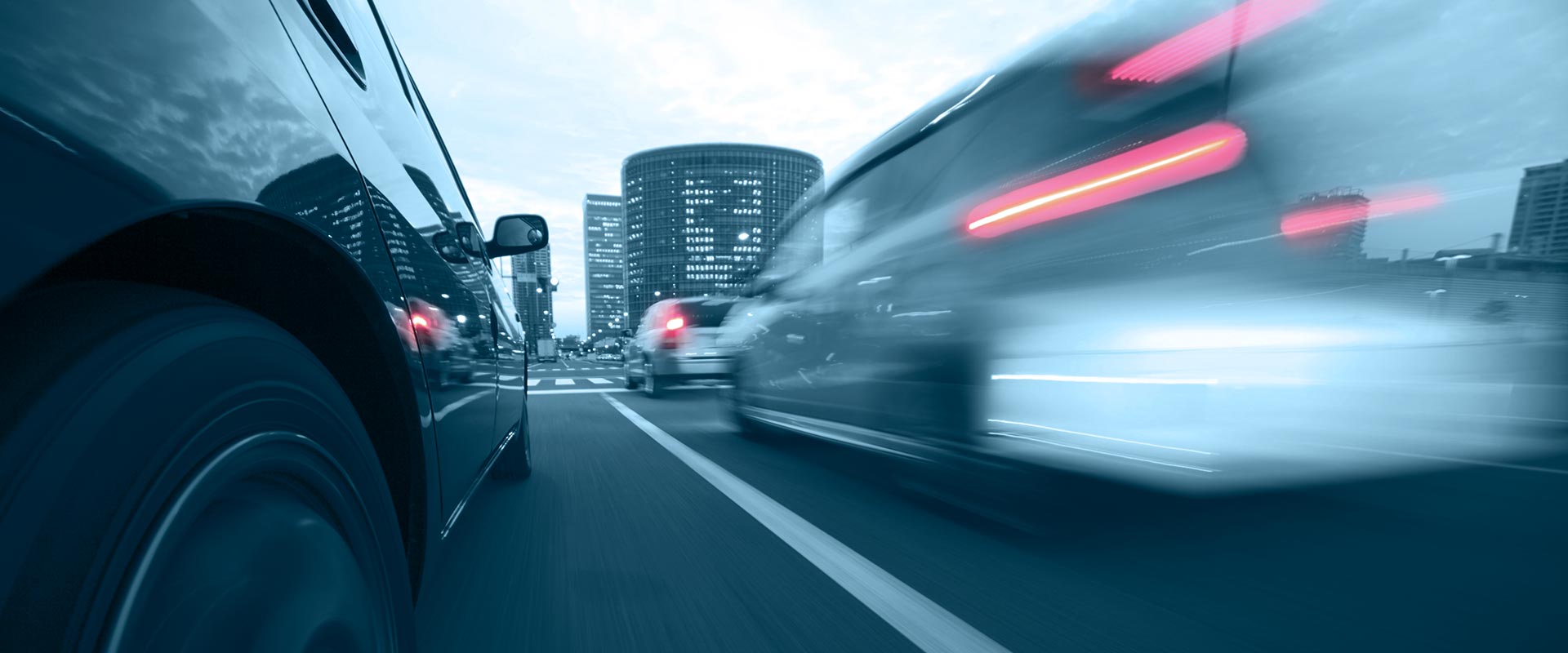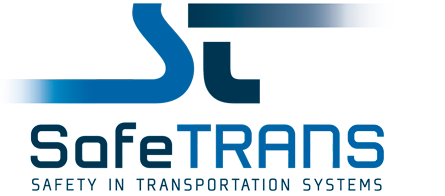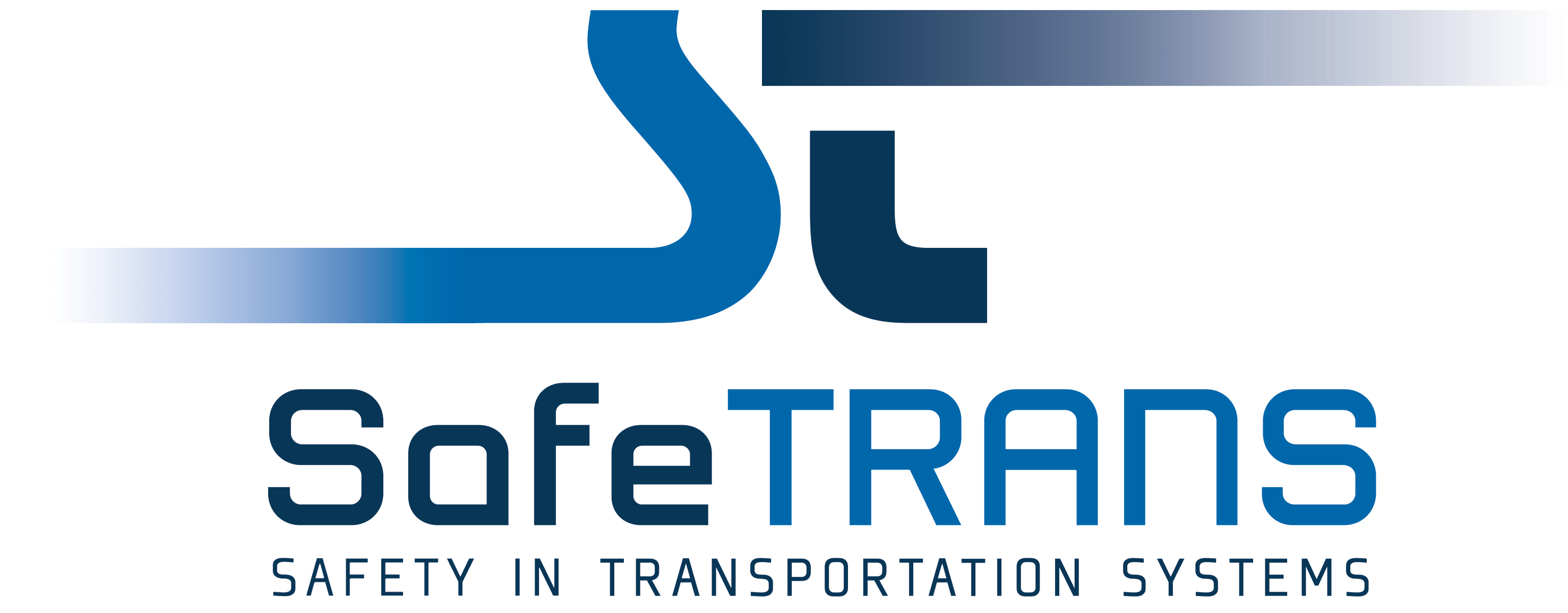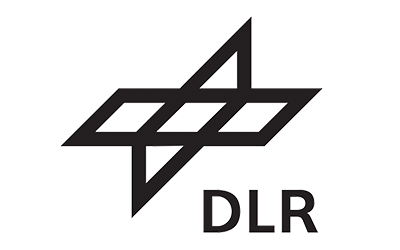| 09:00 – 09:20 |
Registrierung und Kaffee |
| 09:20 – 09:30 |
Begrüßung |
| |
Prof. Dr. Werner Damm, SafeTRANS e.V. / Prof. Dr. Axel Hahn, DLR e.V. |
| 09:30 – 10:00 |
Controlling Risk for Highly Automated Transportation Systems Operating in Complex Open Environments |
| |
Prof. Dr. Werner Damm, SafeTRANS e.V.
Vortragsfolien (passwortgeschützt)
|
| 10:00 – 10:30 |
Environment perception and modelling for assisted and driverless train operation using sensor fusion |
| |
Dr. Kristian Weiß / Dr. Lennart Kilian, Siemens Mobility GmbH
-
Sensor fusion is a core technology of autonomous driving. Key challenge of autonomous driving is to get a comprehensive understanding and interpretation of the environment. The combination of heterogeneous sensor data (like cameras, lidar, radar) or data derived from a-priori sources (e.g. digital maps and expert knowledge) by a Kalman filter enhances the reliability and safety of the environment perception. Uncertainty and their consistency can be modelled by gaussian noise and processed well by Kalman filters. However, environment perception based on sensor measurements are incomplete, uncertain, and erroneous. Thus, perception algorithm and models must deal with these limitations. Furthermore, sensor models are used to describe the capabilities of measure an object in a specific situation. Each physical sensor is represented by an individual sensor model, that also holds information about current capabilities, such as line-of-sight etc. Hereby, sensor fusion cannot only provide an environment model but is also able to determine faulty or inconsistent information sources. However, there are plenty of open questions, such as the models and the mathematics to fuse confidence information from different sensor detectors or how uncertainty boundaries can be determined in a complex multi-sensor system. A proper modelling and handling of all kinds of imperfections is a precondition for self-awareness that enables autonomous systems to perform actions that are situationally appropriate responses to environment changes.
Vortragsfolien (passwortgeschützt)
|
| 10:30 – 11:00 |
Safer Than Perception: Increasing Confidence in Safety-Critical Decisions of Automated Vehicles |
| |
Prof. Dr. Martin Fränzle, Universität Oldeburg
-
We address one of the key challenges in assuring safety of autonomous cyber-physical systems that rely on learning-enabled classification within their environmental perception: How can we achieve confidence in the perception chain, especially when dealing with percepts safe-guarding critical manoeuvres? We present a methodology which allows to mathematically prove that the risk of misevaluating a safety-critical guard conditions referring to environmental artefacts can be bounded to a considerably lower frequency than the risk of individual misclassifications, and can thereby be adjusted to a value less than a given level of societally accepted risk.
Vortragsfolien (passwortgeschützt)
|
| 11:00 - 11:30 |
Kaffeepause |
| 11:30 – 12:00 |
Adverse Weather Conditions in the Validation of ADAS/AD Sensors |
| |
Dr.-Ing. Armin Engstle, AVL SFR GmbH
-
Key topic assignment: Robust Sensor testing/validation; Validated digital twin; sensor measurement and simulation results in adverse weather conditions The sensor technology of future automated driving functions and advanced driver assistance systems must work safely in all weather conditions. Currently, certification tests (e.g. Euro NCAP AEB VRU) are usually only performed in good weather conditions, but not in rain and fog, for example. In order to be able to test weather effects independently of real outdoor conditions, AVL has established an indoor sensor test center for the verification and validation of sensors for driver assistance systems. The proposed conference contribution provides an overview on the following topics: • The importance of systematic parameter variation for improving sensor perception also during adverse weather conditions. • A realistic and reproduceable indoor ADAS / AD sensor testing facility for adverse weather conditions such as rain, fog and light. • Relevant measurement results of lidar sensors in adverse weather conditions and resulting improvement approaches • A digital twin of the sensor testing facility which provides a significant increase of parameter variation . Key Take-Aways: • Considering sensor perception interferences due to adverse weather conditions is decisive for improving the quality of ADAS functions and indispensable for the road release of AD functions / vehicles. • Even more than in the past the “right mix” of test and validation approaches is essential for a reliable and safe sensor and perception approval. • An inverse test strategy from real-world data to indoor testing and virtual simulation is required to ensure a realistic cross validation of the different test and validation approaches (e.g. indoor vs. outdoor, static vs. dynamic SUT).
Vortragsfolien (passwortgeschützt)
|
| 12:00 – 12:30 |
Virtual Testing of AI Object Detection Systems in UAVs and Trains |
| |
Dorian Knoblauch - Fraunhofer FOKUS
-
Safeguarding AI object detection systems in areas like UAVs (drones) and trains is paramount. The performance of these AI systems is deeply rooted in the quality of their training data. As the complexities of real-world scenarios intensify, understanding in which conditions and scenarios AI operates reliably—and where it might stumble—becomes crucial. However, real-world testing isn't just resource-intensive; it's financially burdensome. This has led industries to lean more towards virtual testing. Virtual environments, as championed by Paratrust.ai, offer an avenue to "systematically explore where an AI system fails." These digitally constructed environments present highly customizable scenarios, adaptable to specific use cases. Such explorative testing is exemplified by a dynamic flow from a "starting scene", delving into multifaceted conditions including varied scene constellations, diverse environmental perturbations, and fluctuating weather or time-of-day conditions, ultimately leading to points where the system might fail. Paratrust.ai's simulation environment provides a holistic virtual test suite. This suite begins with an initial scene description, progressing to interfaces for scene descriptions and data export. Leveraging the latest out-of-research technology and Generative AI, image enhancements are applied to ensure photorealism of synthetic data. The Test System (SuT) is hooked in a continuous feedback loop. This loop allows for constant refinement, with scene adjustments being made based on the feedback received, ensuring the AI system is systematically tested and weaknesses are exposed. By bridging systematic exploration with iterative refinement in virtual environments, Paratrust.ai is solidifying its stance at the vanguard of AI testing, ensuring these systems are both efficient and primed for real-world challenges. Furthermore, the feasibility and applicability of these testing methodologies have been evaluated and validated in the KI-Lok project. This significant initiative, funded by the "Bundesministerium für Wirtschaft und Energie" provides additional credibility and underscores the practical relevance of Paratrust.ai's approach to AI system testing in contemporary applications. Die Arbeiten zu dieser Methode und dem Tool Praraturst.ai sind im KI-Lok Projekt entstanden. Das Projekt KI-LOK wird vom Bundesministerium für Wirtschaft und Energie im Rahmen der Förderrichtlinie „Neue Fahrzeug- und Systemtechnologien“ gefördert und finanziert. Projektträger ist der TÜV-Rheinland.
Vortragsfolien (passwortgeschützt)
|
| 12:30 – 13:00 |
Diskussion und Ergebnissicherung |
| 13:00 – 14:00 |
Mittagspause |
| 14:00 – 14:30 |
Challenges in approving AI-based systems from an authority's perspective |
| |
Martin Portier - Bundesamt für Seeschifffahrt und Hydrohraphie - BSH
-
Advanced automation is a key issue in maritime shipping. New technologies are enabling applications that were previously considered out of reach, paving the way for MASS (Maritime Autonomous Surface Ships). Camera-based perception systems with integrated AI components, especially deep learning, are already penetrating the market, but will foreseeably require approval in the context of MASS. However, the special features of AI systems are not covered by the current regulatory framework. Therefore, the question for the Federal Maritime and Hydrographic Agency (BSH) as an approval authority is how such systems can be tested in the future and according to which criteria. In order to test maritime perception systems, suitable and independent data sets are required. Currently, initial attempts are being made on BSH ships to capture image data sets for camera-based perception systems by machine. One of the challenges is how to use data to represent the real world of the maritime environment in order to enable object-based validation and verification. At the formal level, the testing processes must be adapted to meet the requirements of AI systems. Initial proposals for extending the conformity assessment procedure for nautical equipment have already been submitted. The aim is to use a holistic approach to cover a wide range of applications. However, the detailed test contents have yet to be specified. So far, there are no adequate tools to assess the quality of AI systems with their essential properties. The BSH is a maritime service provider and also acts as a point of contact for technical concerns, including new technologies. Research results are integrated into standards to help marine equipment suppliers develop appropriate systems. Even though initial efforts in the area of standardization are already being made, it will take some time before systems can be approved. Until then, a specific test environment must be established and staffed with qualified personnel.
Vortragsfolien (passwortgeschützt)
|
| 14:30 – 15:00 |
Risk Assessment of an Obstacle Detection System for GoA 4 Freight Trains |
| |
Prof. Dr. Jan Peleska - Universität Bremen
-
In this presentation, we describe a novel method to assess the residual error probability of convolutional neural networks (CNN) used for classification pur- poses in a safety-critical context. Our main application target is the utilisation of CNN in sensor fusion systems used for obstacle detection in future freight trains with grade of automation GoA 4. For each sub-component of the sensor fusion, a trustworthy estimate for the residual failure probability is required. For a CNN this means that an upper bound for its safety-critical misclassification probability (CNN detects no obstacle though an obstacle is present) needs to be determined. Moreover, a confidence value for this upper bound is needed. For determining the residual error probability estimate and its confidence value, we have elaborated an approach consisting of two main tasks. 1. Using methods of mathematical analysis on the inter-layer transformations of the trained CNN, we determine a finite number of equivalence classes in the image input space. Two members of the same class are mapped by the CNN to the same classification result. The union of (connected) equivalence classes leading to the same result represent (not necessarily connected) classification clusters in the sense of ANSI/UL 4600. 2. A statistical test suite inspired by the Coupon Collector’s Problem and its solution is used to determine the residual probability for real-world obstacles to be associated with an equivalence class that has not been captured during the CNN training phase. If this probability is too high, the CNN needs to be re-trained. For ensuring stochastic independence between different samples of the statis- tical test suite and between differently trained CNN, known solutions from the field of Explainable AI can be effectively applied.
Vortragsfolien (passwortgeschützt)
|
| 15:00 – 15:30 |
Kaffeepause |
| 15:30 – 16:00 |
Garantien für Unsicherheitsquantifizierungen in der Perzeption mittels Uncertainty Wrapper |
| |
Pascal Gerber - Fraunhofer IESE
-
Im Vortrag gibt Dr. Michael Kläs, AI Safety Expert am Fraunhofer IESE und stellvertretender Obmann bei der Ausarbeitung der DIN SPEC 92005 – Uncertainty quantification in machine learning, einen Überblick zum Thema Unsicherheitsquantifizierung mit probabilistischen Garantien bei ML-Modellen. Er geht dabei insbesondere auf Uncertainty Wrapper und deren Anwendung in der Perzeption ein. Neben der Vermittlung der Grundzüge des modellagnostischen Ansatzes und dessen Einordnung in die Welt der Unsicherheitsquantifizierung, gibt er einen Einblick in aktuelle Forschungsarbeiten. Diese umfassen unteranderem die Anwendung von Uncertainty Wrapper bei der Fusion autokorrelierter Bildserien sowie deren Unterschiede und Kombinierbarkeit mit Conformal Predictions. Uncertainty Wrapper (Kläs&Sembach, 2019) liefern einen modellagnostischen Ansatz für verlässliche Unsicherheitsschätzungen mit probabilistischen Garantien. Daneben unterscheiden sie sich insbesondere in ihrer Transparenz und holistischen Berücksichtigung unterschiedlicher Unsicherheitsquellen von anderen Ansätzen zur Unsicherheitsquantifizierung bei ML-Modellen.
Vortragsfolien (passwortgeschützt)
|
| 16:00 – 16:30 |
Situation Recognition in Complex Operational Domains using Temporal and Description Logics – A Motivation from the Automotive Domain |
| |
Lukas Westhofen - DLR e.V. - Institute of Systems Engineering for Future Mobility
-
When confronted with automated systems operating in highly complex domains, such as urban road traffic, situations relevant to the automation must be recognized in data. We make a a case for temporal querying over expressive description logics as a suitable solution to this task. To highlight its benefits, we contribute a practical motivation for temporal querying from the field of scenario-based assessment of automated driving systems. We identify desired properties of such temporal queries and devise a tailor-made language for them, based on top of Mission-Time Linear Temporal Logic and Conjunctive Queries. An initial but optimized implementation of this language shows promising results on a synthetic data set.
Vortragsfolien (passwortgeschützt)
|
| 16:30 - 17:00 |
Diskussion und Ergebnissicherung |
| 17:00 |
Ende der Veranstaltung |



